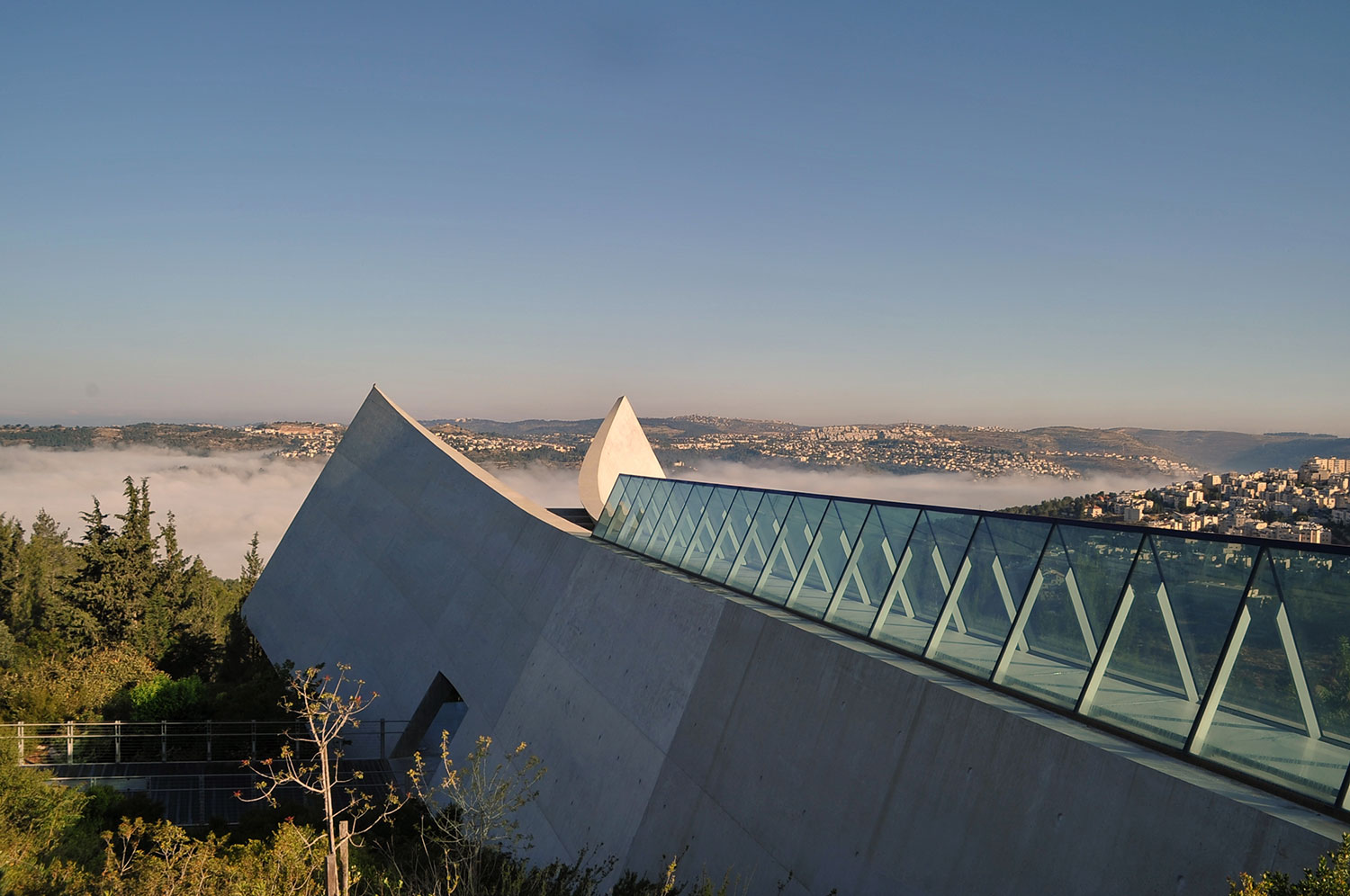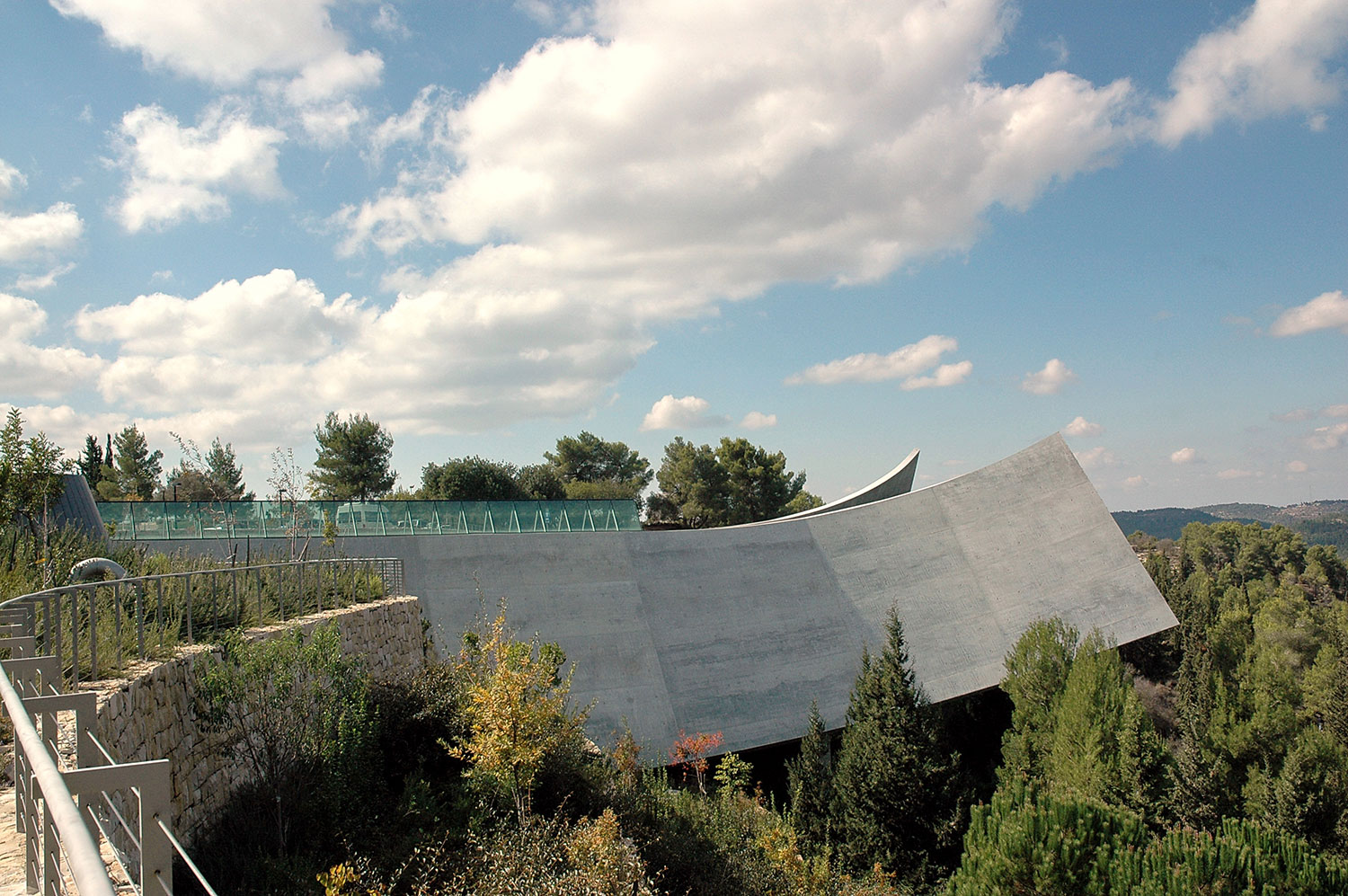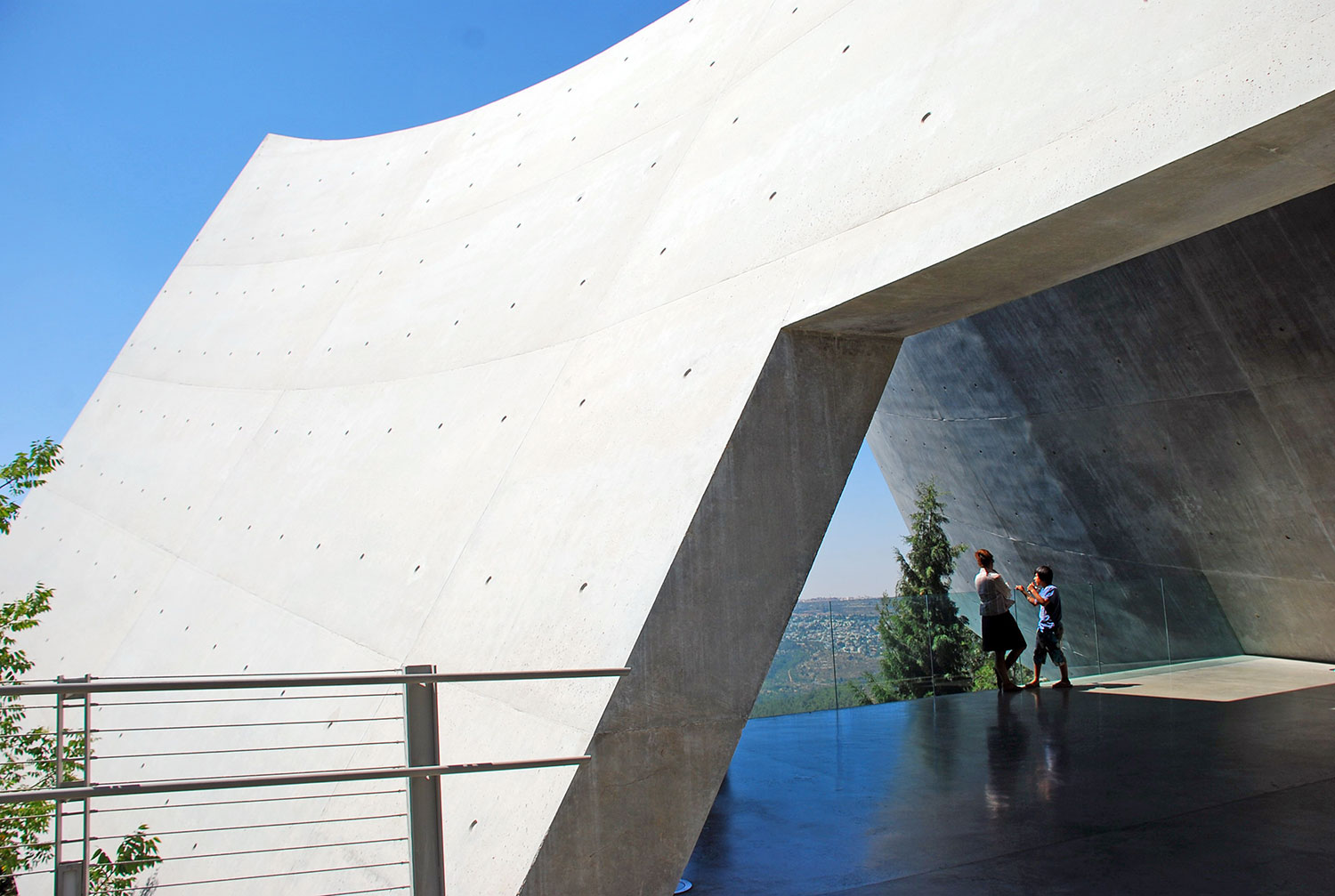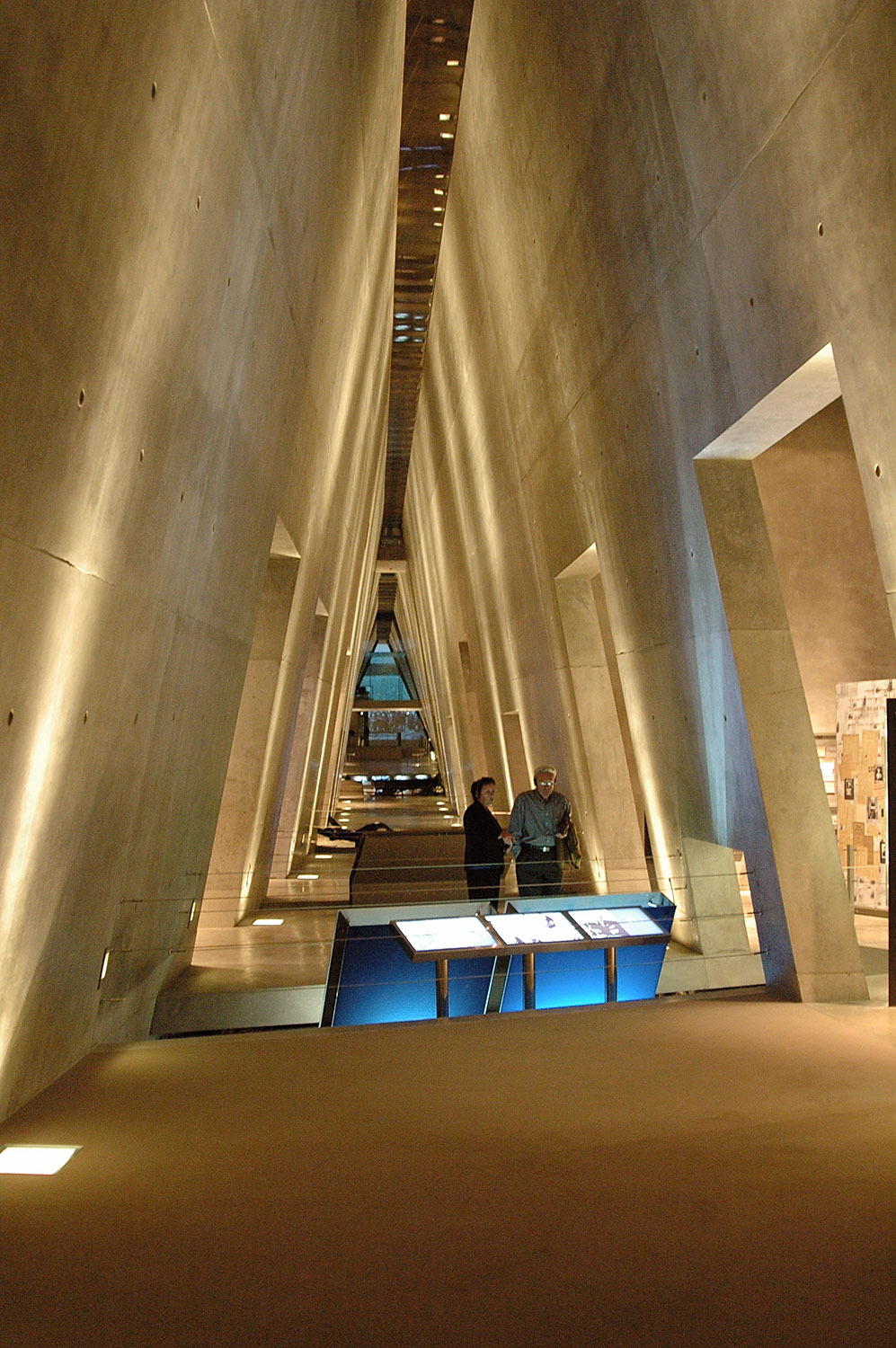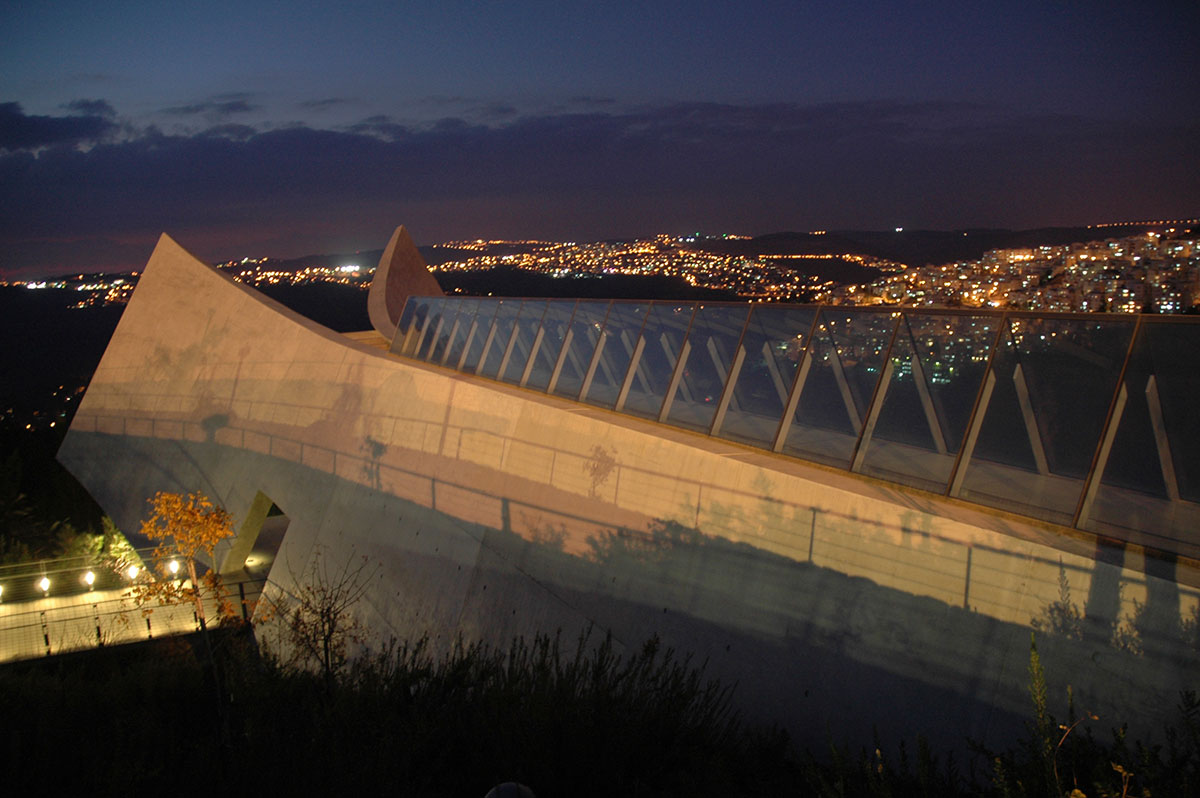Designed by world-renowned architect Moshe Safdie, the new Holocaust History Museum is a prism-like triangular structure that penetrates the mountain from one side to the other, with both ends dramatically cantilevering into the open air. The triangular form of the structure was chosen to support the pressure of the earth above the prism while bringing in daylight from above through a 200 meter-long glass skylight. The skylight allows gleams of daylight to contrast with darker areas required for multimedia presentations. Within the galleries, light enters through localized skylights varying from diffused to clear glass, depending on the requirements of each exhibit.
The entire structure of the museum — floors, wall, interior and exterior — are reinforced concrete. Throughout the prism, the triangular cross-section varies, becoming narrower at the center. The warped surface formed by this variation, amplified by a gently sloping floor, creates a changing sequence of spaces and gives the illusion of descending deep into the mountain. As the route nears its northern exit, the floor begins to ascend and the triangle opens up again, with the exit bursting forth from the mountain’s slope to a dramatic view of modern-day Jerusalem.
The Holocaust History Museum and the Hall of Names Under Construction
